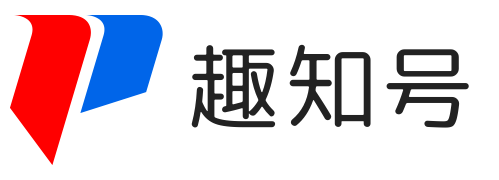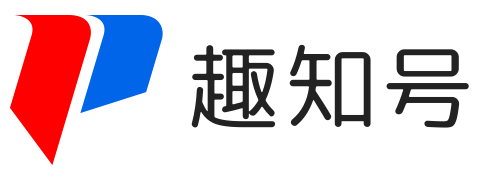PHP对象如何转换为JSON:全面解析与实践指南
在Web开发中,JSON(JavaScript Object Notation)已成为数据交换的主流格式,PHP作为服务器端脚本语言,经常需要将对象数据转换为JSON格式以便前端使用,本文将详细介绍PHP对象转换为JSON的各种方法、注意事项及实际应用场景。
基本转换方法:json_encode()
PHP提供了内置函数json_encode(),这是将PHP对象转换为JSON字符串最直接的方式。
简单对象转换
class User {
public $name = "John";
public $age = 30;
public $email = "john@example.com";
}
$user = new User();
$jsonString = json_encode($user);
echo $jsonString;
// 输出: {"name":"John","age":30,"email":"john@example.com"}
私有/受保护属性的处理
默认情况下,json_encode()只能序列化public属性,如果需要处理private或protected属性,可以采取以下方法:
class PrivateUser {
private $name = "Alice";
protected $age = 25;
public function __sleep() {
return ['name', 'age']; // 明确指定需要序列化的属性
}
}
$privateUser = new PrivateUser();
$jsonString = json_encode($privateUser);
echo $jsonString;
// 输出: {"name":"Alice","age":25}
高级处理技巧
使用JSON_PRETTY_PRINT美化输出
$jsonPretty = json_encode($user, JSON_PRETTY_PRINT);
/*
输出:
{
"name": "John",
"age": 30,
"email": "john@example.com"
}
*/
处理特殊字符和Unicode
默认情况下,json_encode()会转义特殊字符并确保输出是有效的UTF-8,如果需要保留原始Unicode字符:
$jsonUnicode = json_encode($user, JSON_UNESCAPED_UNICODE); // 对于包含非ASCII字符的对象,可以保留原始Unicode
处理循环引用
PHP对象中如果存在循环引用,直接使用json_encode()会抛出异常,解决方案:
class Node {
public $value;
public $next;
public function __construct($value) {
$this->value = $value;
$this->next = null;
}
}
$node1 = new Node(1);
$node2 = new Node(2);
$node1->next = $node2;
$node2->next = $node1; // 创建循环引用
// 使用JSON_FORCE_OBJECT避免错误
$json = json_encode($node1, JSON_FORCE_OBJECT);
// 或者先解除循环引用
$node2->next = null;
$json = json_encode($node1);
自定义JSON序列化行为
实现JsonSerializable接口
从PHP 5.4.0开始,对象可以实现JsonSerializable接口来自定义序列化行为:
class Product implements JsonSerializable {
private $id;
private $name;
private $price;
public function __construct($id, $name, $price) {
$this->id = $id;
$this->name = $name;
$this->price = $price;
}
public function jsonSerialize() {
return [
'product_id' => $this->id,
'title' => $this->name,
'cost' => $this->price + 10 // 自定义价格逻辑
];
}
}
$product = new Product(101, 'Laptop', 999.99);
$json = json_encode($product);
echo $json;
// 输出: {"product_id":101,"title":"Laptop","cost":1009.99}
使用魔术方法sleep()和wakeup()
对于更复杂的序列化需求,可以使用__sleep()和__wakeup()方法:
class ComplexObject {
private $data;
private $temp;
public function __construct($data) {
$this->data = $data;
$this->temp = 'temporary data';
}
public function __sleep() {
return ['data']; // 只序列化data属性
}
public function __wakeup() {
$this->temp = 'recovered data';
}
}
常见问题与解决方案
处理NULL值和空数组
$data = [
'user' => null,
'items' => []
];
$json = json_encode($data);
// 输出: {"user":null,"items":[]}
处理日期时间对象
PHP的DateTime对象需要特殊处理:
$date = new DateTime('2023-01-01');
$json = json_encode(['date' => $date->format('Y-m-d H:i:s')]);
// 或者使用JsonSerializable接口处理
处理资源类型
资源类型(如文件句柄、数据库连接)无法序列化:
$file = fopen('example.txt', 'r');
$json = json_encode(['file' => $file]); // 会返回null
实际应用场景
API响应
class ApiResponse {
private $status;
private $data;
private $message;
public function __construct($status, $data, $message = '') {
$this->status = $status;
$this->data = $data;
$this->message = $message;
}
public function toJson() {
return json_encode([
'status' => $this->status,
'data' => $this->data,
'message' => $this->message
]);
}
}
$response = new ApiResponse('success', ['id' => 123, 'name' => 'Item']);
header('Content-Type: application/json');
echo $response->toJson();
缓存存储
$cacheData = json_encode($userObject);
file_put_contents('user_cache.json', $cacheData);
// 读取时
$loadedUser = json_decode(file_get_contents('user_cache.json'));
性能优化建议
- 对于大型对象,考虑只序列化必要的数据
- 避免在循环中频繁调用
json_encode() - 使用
JSON_FORCE_OBJECT时谨慎,可能增加数据大小 - 对于频繁序列化的对象,实现
JsonSerializable接口通常比依赖默认行为更高效
PHP对象转换为JSON是Web开发中的常见任务,通过合理使用json_encode()函数、实现JsonSerializable接口以及处理特殊属性和场景,可以灵活高效地完成对象序列化,在实际应用中,应根据具体需求选择最适合的方法,并注意处理可能出现的各种边界情况,确保生成的JSON数据既符合业务需求又具有良好的性能表现。







还没有评论,来说两句吧...